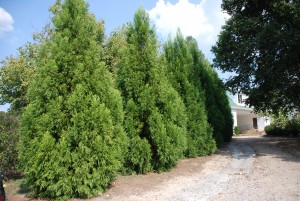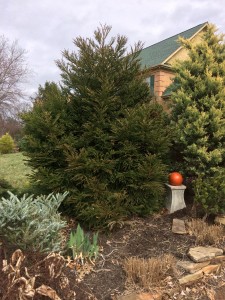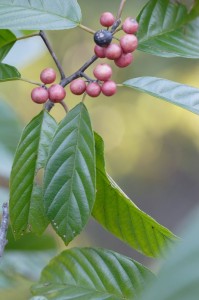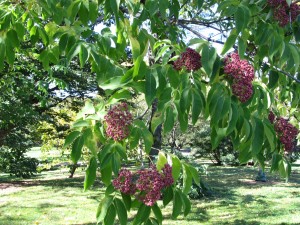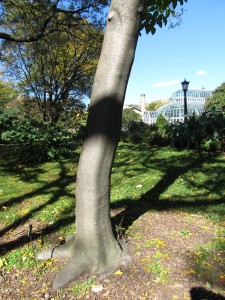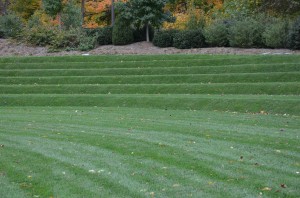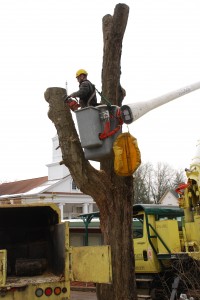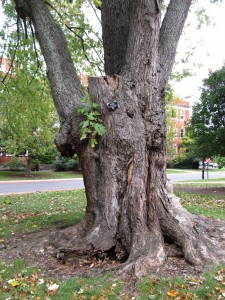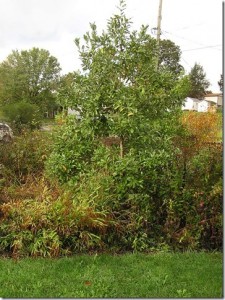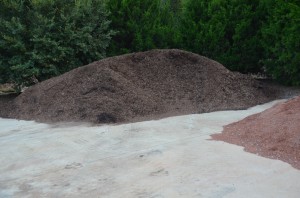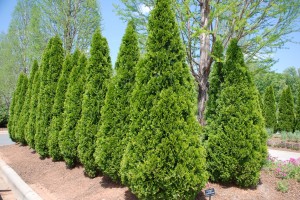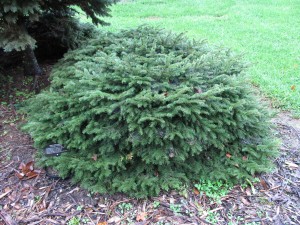For homeowners in a rush to establish a tall green privacy screen from the neighbor(s), perhaps a 12-foot tall green fence may be your better option. Among the choices of evergreens to plant, Leyland cypress (x Cupressocyperus leylandii) is fastest growing, but is plagued by any of three serious disease problems. An established leyland cypress planted 12 feet apart completely occupies its place and stands 12 plus feet tall within 10 years if adequately fertilized and irrigated.
Foliage disease problems usually do not infect leyland cypress until 10-12 years after planting. No disease cure-alls (fungicides) are presently available. Pruning off diseased branches on tall ladders is the best cure-all which can be a highly expensive and a dangerous chore for diyers to take on.
In northerly zones (USDA hardiness zone 6 and 7), Japanese cryptomeria (Cryptomeria japonica) and ‘Green Giant’ arborvitae (Thuja plicata x T. standishii) may be the evergreen privacy screen that you’re looking for. Within 1-2 years after planting, their growth rate is moderate, 16-20 inches annually. They may not be as vigorous like leyland cypress, but without the disease threat that may destroy a privacy screen within 20 years. Two-year established arborvitaes and cryptomerias exhibit better drought resistance than Leyland cypresses.
An occasional pest of all three evergreen species are bagworms which can devour new soft spring foliage. Inspect evergreens in late winter and treat with any of a number of pesticides previously listed in my “bagworms” blog. The winter foliage of all three usually bronzes off, but quickly recovers (greens-up) in the early days of spring.

